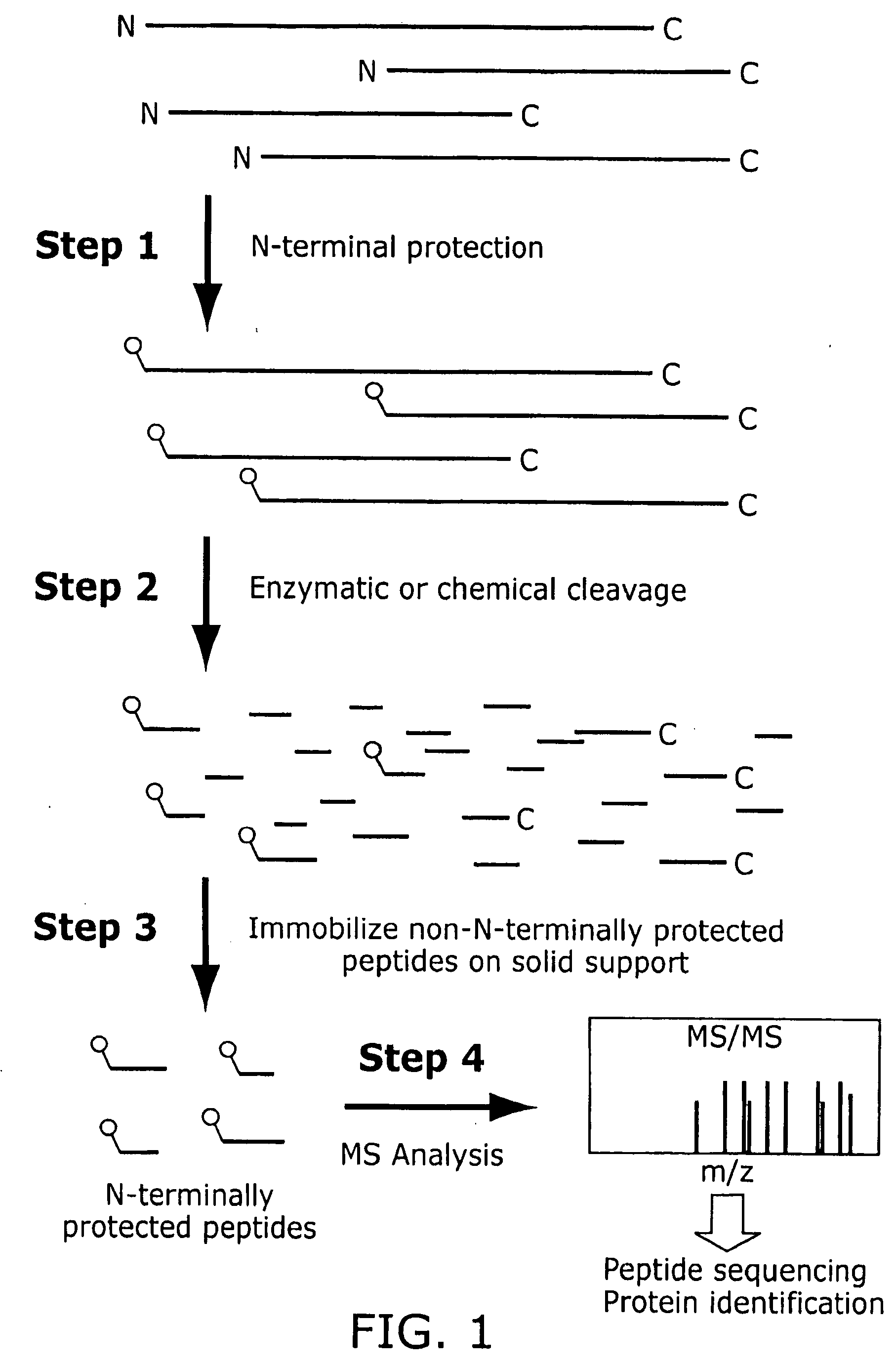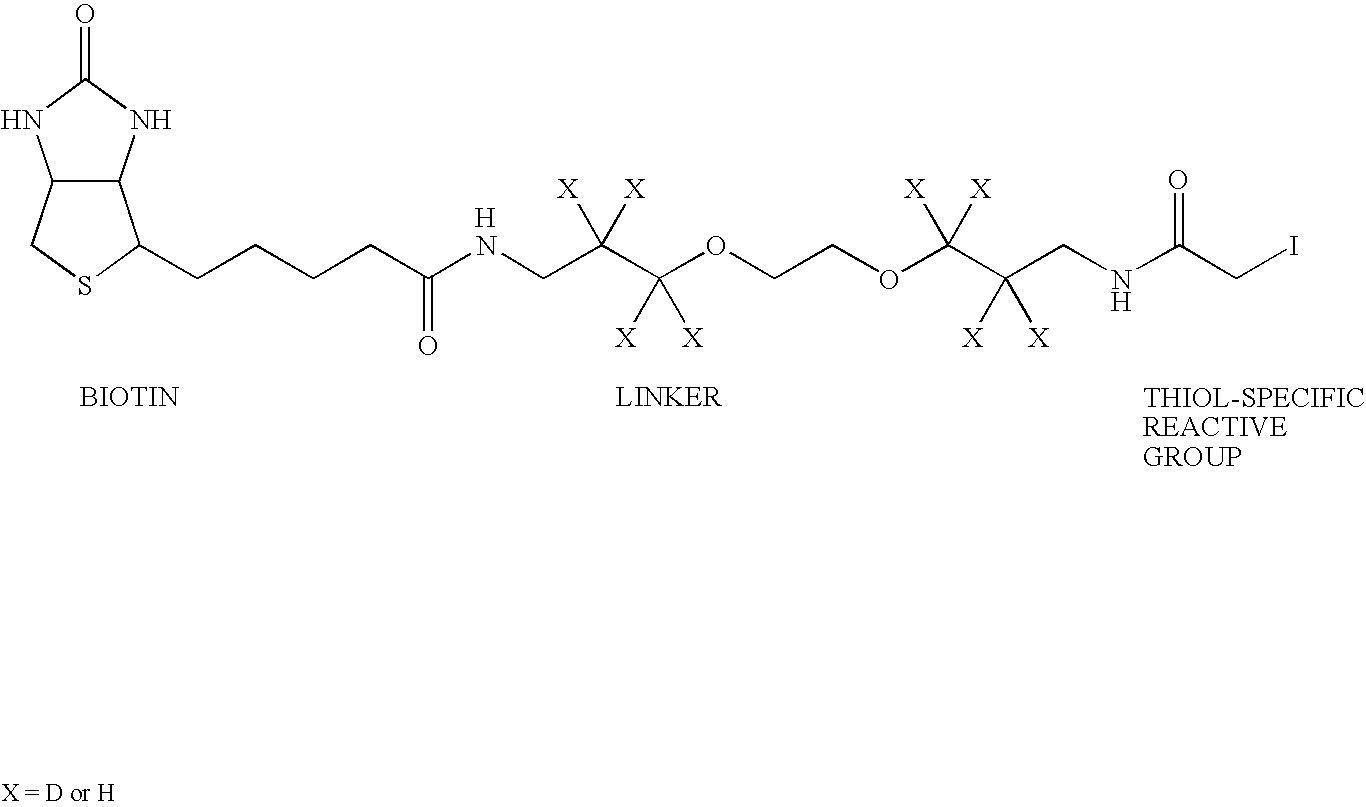N-or C-terminal peptide selection method for proteomics
a peptide and selection method technology, applied in the field of n-or c-terminal peptide selection method for proteomics, can solve the problems of inability to achieve the goal, inability to quantitatively compare two similar proteomes, and complexity of proteomic analysis, so as to reduce the effect of reducing the complexity of the sampl
- Summary
- Abstract
- Description
- Claims
- Application Information
AI Technical Summary
Benefits of technology
Problems solved by technology
Method used
Image
Examples
Embodiment Construction
[0067] Certain exemplary embodiments of the invention will now be more particularly described and pointed out in the following text. It will be understood that the particular embodiments of the invention are shown by way of illustration and not as limitations of the invention. Principle features of the invention may be employed in various embodiments without departing from the scope of the invention.
[0068] Strategies for target-driven drug discovery and rational drug design require identifying key cellular components, such as proteins, that are causally related to disease processes and the use of such components as targets for therapeutic intervention. However, present methods of analyzing biomolecules such as proteins are time consuming and expensive, and suffer from inefficiencies in detection, imaging, purification and analysis. It will be evident, therefore, that the present invention has huge potential for the automated identification and / or partial characterization of protein...
PUM
| Property | Measurement | Unit |
|---|---|---|
| pH | aaaaa | aaaaa |
| mass spectroscopic method | aaaaa | aaaaa |
| mass spectroscopic technique | aaaaa | aaaaa |
Abstract
Description
Claims
Application Information
 Login to View More
Login to View More - R&D
- Intellectual Property
- Life Sciences
- Materials
- Tech Scout
- Unparalleled Data Quality
- Higher Quality Content
- 60% Fewer Hallucinations
Browse by: Latest US Patents, China's latest patents, Technical Efficacy Thesaurus, Application Domain, Technology Topic, Popular Technical Reports.
© 2025 PatSnap. All rights reserved.Legal|Privacy policy|Modern Slavery Act Transparency Statement|Sitemap|About US| Contact US: help@patsnap.com


